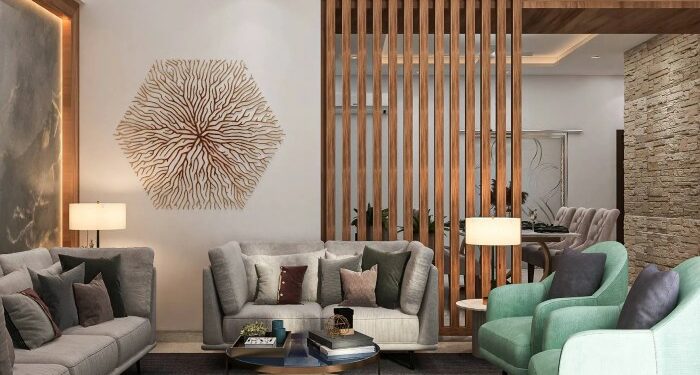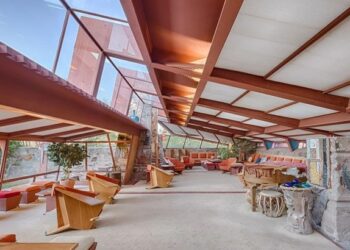Step into the world of living room interior design, where creativity meets functionality. Discover how the layout, color scheme, and furniture choices play a pivotal role in transforming a space into a cozy sanctuary. Let's delve into the art of designing a living room that reflects your personality and style.
Importance of Living Room Interior Design
Having a well-designed living room in a home is crucial as it serves as the central space for relaxation, entertainment, and socializing with family and friends. The design of this room can significantly impact the overall atmosphere and functionality of the house.
Enhancing Ambiance through Interior Design
Interior design plays a vital role in enhancing the ambiance of the living room. The color scheme, lighting, layout, and furniture placement all contribute to creating a welcoming and comfortable environment. By carefully selecting these elements, homeowners can set the tone for the entire house.
Role of Furniture and Decor
The furniture and decor in the living room are essential components of a cohesive design scheme. From the sofa and coffee table to the rugs and artwork, each piece contributes to the overall aesthetic and functionality of the space. Choosing pieces that complement each other and reflect the homeowner's style is key to creating a harmonious design.
Elements of Living Room Interior Design
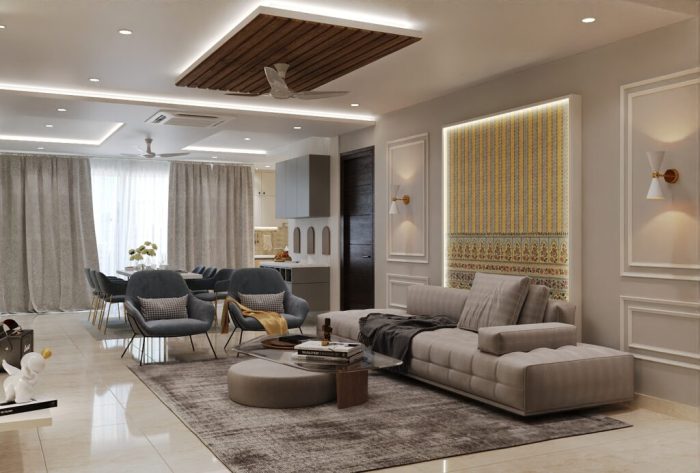
When it comes to designing a living room, several key elements play a crucial role in creating a cohesive and aesthetically pleasing space. These elements include lighting, color scheme, furniture, and layout, each contributing to the overall design in unique ways.
Lighting
Lighting is a fundamental element in interior design as it can greatly influence the mood and ambiance of a room. Proper lighting can highlight architectural features, create a focal point, and enhance the overall atmosphere. Whether it's natural light, overhead fixtures, or accent lighting, the placement and type of lighting can make a significant impact on the design.
Color Scheme
The color scheme sets the tone for the living room and ties the design elements together. Choosing the right colors can evoke different emotions and create a harmonious environment. Warm tones like red and yellow can create a cozy and inviting space, while cool tones like blue and green can promote a sense of calm and relaxation.
Furniture
The furniture in a living room not only serves a functional purpose but also contributes to the overall aesthetic. The style, size, and arrangement of furniture pieces can define the space and create a sense of balance. Whether it's a statement sofa, a coffee table, or accent chairs, each piece plays a role in shaping the design.
Layout
The layout of the living room determines how the space is utilized and how people interact within it. A well-thought-out layout considers traffic flow, focal points, and functional areas. Creating a balanced layout ensures that the room feels harmonious and comfortable for both everyday use and entertaining.
Popular Styles for Living Room Interior Design
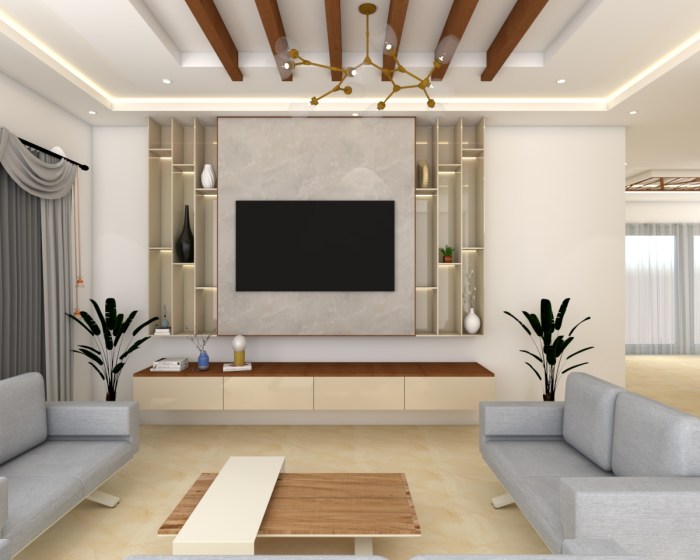
When it comes to living room interior design, there are several popular styles that homeowners can choose from to create a unique and inviting space. Each style has its own characteristics in terms of colors, textures, and patterns, allowing for a variety of design options to suit different preferences and aesthetics.
Modern
Modern interior design often features clean lines, minimalistic furniture, and a neutral color palette with pops of bold colors. To implement a modern style in a living room, one can opt for sleek furniture, such as a leather sofa or a glass coffee table, and incorporate elements like metal accents or geometric patterns.
The key is to keep the space clutter-free and focus on functionality while maintaining a sense of sophistication.
Minimalist
Minimalist design focuses on simplicity and functionality, with an emphasis on decluttering and maximizing space. In a minimalist living room, one can choose furniture with clean lines and a monochromatic color scheme to create a sense of calm and openness.
By incorporating only essential items and avoiding unnecessary decorations, a minimalist style can help create a peaceful and serene environment.
Traditional
Traditional interior design is characterized by classic furniture pieces, rich colors, and intricate patterns. To achieve a traditional look in a living room, one can opt for ornate furniture, such as a tufted sofa or a wooden coffee table, and incorporate elements like floral prints or decorative molding.
The goal is to create a warm and inviting space with a timeless appeal that exudes elegance and comfort.
Eclectic
Eclectic design combines elements from different styles and periods to create a unique and personalized look. In an eclectic living room, one can mix and match furniture pieces, colors, and textures to create a visually interesting and dynamic space. By blending different styles and incorporating eclectic decor items, such as vintage rugs or artwork, homeowners can showcase their individuality and creativity while adding character to the room.
Tips for Decorating a Living Room
When it comes to decorating a living room, there are several key tips to keep in mind to create a welcoming and stylish space. From selecting the right furniture to maximizing natural light, these strategies can help you transform your living room into a cozy retreat that reflects your personal style.
Selecting Furniture that Fits the Space
When choosing furniture for your living room, it's important to consider the size and layout of the space. Opt for pieces that are proportionate to the room and avoid overcrowding. Selecting a mix of furniture styles and sizes can add visual interest and create a balanced look.
Additionally, consider the functionality of each piece and how it will be used in the room.
Maximizing Natural Light and Creating a Cozy Atmosphere
To enhance the natural light in your living room, opt for light-colored curtains or sheer drapes that allow sunlight to filter through. Positioning mirrors strategically can also help reflect light and make the space feel brighter and more open. Adding soft, textured rugs, throw pillows, and blankets can create a cozy atmosphere, while incorporating warm lighting fixtures can set the mood for relaxation.
Incorporating Personal Touches and Adding Character
To infuse your living room with personality, consider adding personal touches such as family photos, artwork, or decorative accessories that reflect your interests and style. Mixing in vintage or unique pieces can add character to the room and make it feel more curated and inviting.
Don't be afraid to experiment with different textures, patterns, and colors to create a space that feels uniquely yours.
Final Conclusion
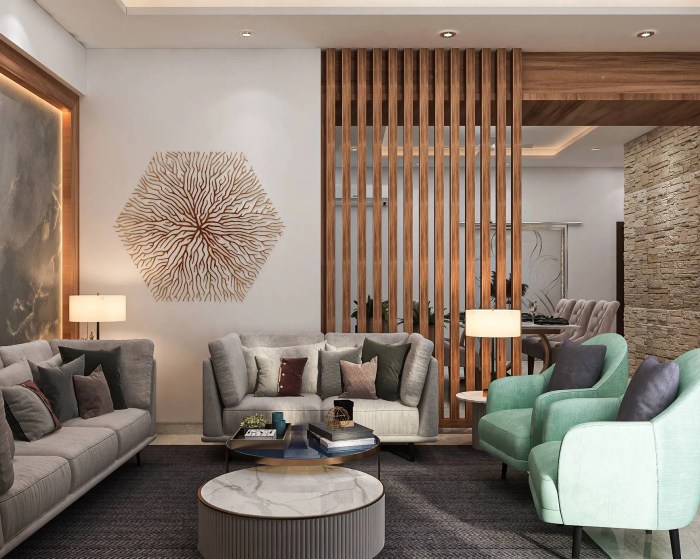
In conclusion, mastering the art of living room interior design involves a delicate balance of aesthetics and practicality. By incorporating the right elements and styles, you can create a space that not only looks visually appealing but also feels inviting and comfortable.
Embrace your creativity and embark on the journey of transforming your living room into a true reflection of your unique taste.
FAQ Resource
How important is lighting in living room interior design?
Lighting plays a crucial role in setting the ambiance of a living room. It can highlight key features, create a cozy atmosphere, and enhance the overall design.
What are some popular interior design styles for living rooms?
Some popular styles include modern, minimalist, traditional, and eclectic. Each style offers a unique aesthetic and can be tailored to suit individual preferences.
How can I add personal touches to my living room decor?
You can add personal touches by incorporating items that hold sentimental value, displaying artwork or photographs, and choosing decor pieces that reflect your personality.

